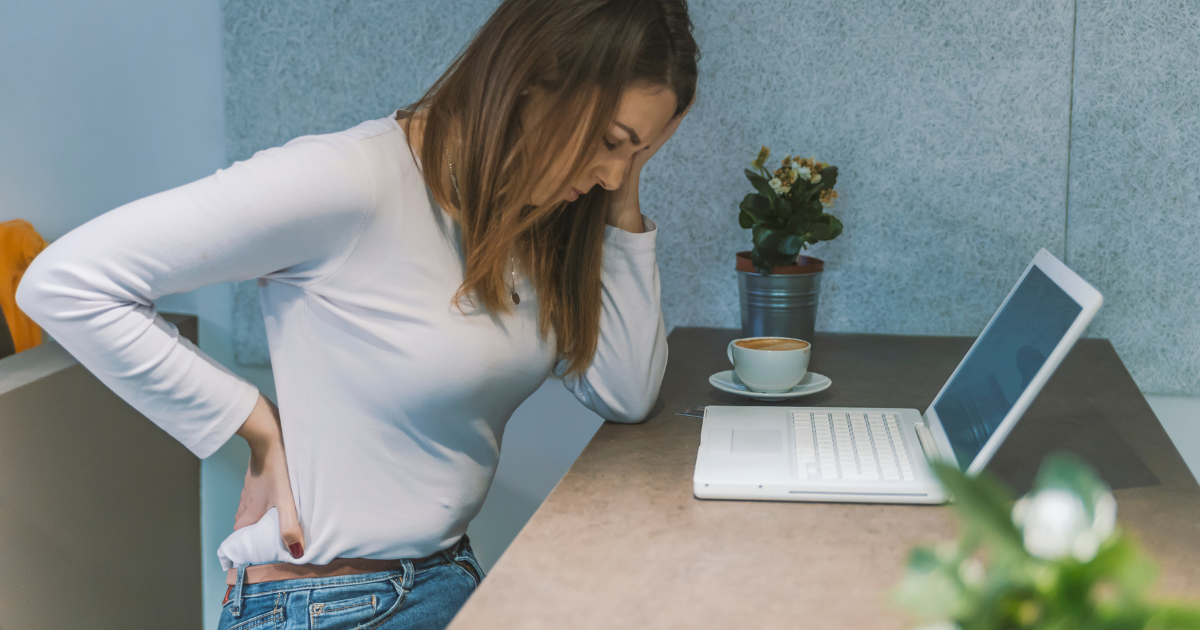Is Muscle Tightness Wrecking Your Back? Here’s How to Fix It
Key Takeaways:
Muscle Tightness and Back Pain: Tight and rigid muscles can cause strain on joints, misalign the spine, and compress nearby nerves, leading to back pain and reduced mobility.
Common Causes: Sedentary Lifestyle, Improper Posture and Heavy Lifting, Arthritis and Ankylosing Spondylitis
Prevention and Management: Stay Active, Practice Good Posture, Stretching and Strengthening
LUMINAS Pain Relief Patches: Our patches help reduce pain and inflammation by improving blood flow and supporting recovery. Apply to the affected area as part of your pain management routine.
Medical Treatment: Seek professional help for persistent tightness, and use over-the-counter or prescribed medications as needed, alongside physical therapy for long-term relief.
Tight and rigid muscles are often the culprits behind back stiffness and pain, ranging from mildly annoying to downright debilitating. But do you know how and when to make the most effective changes that'll eliminate this problem as a norm?
If you answered no, you're in the right place! In this blog, we’re diving into what causes this tightness, how it affects your spine and joints, and what you can do to prevent and manage this pain. From understanding the root causes to discovering how LUMINAS patches can complement your pain management strategy, we've got you covered.

How Can Stiff and Tight Muscles Result in Back Pain?
Muscle tightness, also known as muscle rigidity, refers to a condition where your muscles are unable to relax as they normally do, leading to pain, inflammation, and other symptoms like reduced flexibility and stiffness. This tightness often contributes to back pain by straining the joints, particularly in the lumbar spine.
Stiffness in the lower back or hamstrings can pull on the pelvis, misaligning the spine and causing lower back pain. Similarly, tension in the upper back can affect shoulder joint function, leading to upper back pain and reduced mobility. Tight muscles, such as those in the back and hamstring muscles, can make it harder for joints to move properly, which in turn can cause further strain and discomfort.
Moreover, rigid muscle can compress nearby nerves, leading to nerve damage if left untreated for long periods. This compression can result in symptoms like tingling, numbness, or persistent pain in the right shoulder, left side, or right arm, contributing to overall discomfort and impacting your ability to perform everyday activities.
Causes of Stiff and Tight Muscles Leading to Back Pain
So, what causes our muscles to tighten up in the first place? Let’s explore some of the most common reasons why:
Sedentary Lifestyle and Prolonged Sitting
A sedentary lifestyle, marked by prolonged sitting and minimal movement, is a major contributor to muscle rigidity. Muscles need regular activity and variation to maintain flexibility and strength. Sitting for long periods, especially with poor posture, can cause back muscles to lose flexibility, leading to stiffness and tightness in the lumbar spine and lower back.
On top of causing pain due to lost flexibility, being sedentary can result in muscle loss; a condition only resolved through consistent efforts to maintain an active lifestyle.
Heavy Lifting and Poor Posture
Improper lifting techniques and poor posture are common causes of back injuries and muscle strain. When lifting heavy objects, always bend your knees, not your back, and avoid twisting your spine. Twisting while lifting can cause a sudden rotation of the spine, increasing the risk of muscle strain or more severe back injury.
Poor posture while sitting or standing can also cause muscle stiffness and tightness in the lower back, shoulders, and neck. This is especially true if you frequently slouch or hunch over a desk. Practicing good posture and using ergonomic furniture can help alleviate back pain and prevent further strain.
Arthritis and Ankylosing Spondylitis
Arthritis and ankylosing spondylitis are inflammatory conditions that affect the joints and spinal column. Arthritis, including osteoarthritis and rheumatoid arthritis, causes joint inflammation and cartilage breakdown, leading to chronic pain and muscle stiffness around the spine. Ankylosing spondylitis specifically targets the spine, causing vertebrae to fuse, reducing flexibility, and leading to chronic stiffness and lower back pain.
These conditions often require medical treatment and home treatments such as physical therapy, pain relievers, and anti-inflammatory medications to manage symptoms.
Prevention and Management Strategies for Reducing Muscle Tightness
Taking proactive steps to prevent and manage tightness can make a world of difference in relieving back pain and improving overall health. Here are some strategies to keep your muscles relaxed and your back pain-free:
1. Try LUMINAS Pain Relief Patches
As you work to improve your lifestyle practices, LUMINAS patches can help provide relief for pain and inflammation! In addition to helping relieve general back stiffness, LUMINAS Relief patches help by improving blood flow, optimizing your injury and muscle recovery.
Simply apply 1-2 LUMINAS patches to the area of concern at the start of your day or before bed, and let them get to work.
2. Avoid Prolonged Sitting and Stay Active
To prevent stiffness and muscle tightness, avoid prolonged sitting by incorporating movement into your daily routine. Stand up, stretch, or take a short walk every hour to keep your muscles active and blood flowing. Regular light activity, such as walking or yoga, improves circulation, reduces the risk of stiffness, and helps maintain a healthy weight, which can alleviate strain on the back muscles.
Additionally, partaking in at least 2.5 hours of moderate physical activity per week as recommended by the CDC, paired with a balanced diet, can help reduce extra weight which puts additional strain on your back.
3. Practice Proper Posture and Lifting Techniques
While reducing sitting time is a great start, it must be accompanied by proper sitting posture. When sitting, keep your knees bent at a 90-degree angle and your feet flat on the floor. This helps maintain the natural curve of your spine and supports better alignment. When standing, keep your shoulders down and back, your chest lifted, and your hips and spine in a neutral position to distribute your weight evenly and reduce strain as much as possible.
Friendly Tip: Consider switching up your chair to one with good lumbar support, adjusting your desk height to keep your forearms parallel to the floor, and positioning your monitor at eye level to avoid straining your neck. Simple adjustments like these can help maintain proper posture and reduce muscle strain.
4. Stretching and Strengthening Exercises
Incorporate regular stretching routines into your daily activities to improve flexibility and keep your body strong. Focus on stretches that target the back muscles, hamstring muscles, and core muscles. For example, back stretches like the Cat-Cow or Child’s Pose help loosen tight back muscles, while hamstring stretches like the Standing Forward Bend relieve tension in the hamstring muscles that run along the back of your thigh.
Strengthening exercises, such as planks and bridges, can build core stability and support your spine, reducing the risk of back pain. Strengthening the core muscles and abdominal muscles helps maintain proper alignment and reduces strain on the back.
You've Made The First Step
Muscle issues are a common cause of back pain, but by reading this blog and understanding how they affect your body, you've made the first step towards living pain-free.
Don’t wait until the pain becomes unbearable—be proactive in addressing muscle tightness to maintain a healthy, pain-free back. Remember, taking care of your muscles is a long-term investment for your health, both physically and mentally. By combining long-term strategies like regular movement and stretching with innovative solutions like LUMINAS pain relief patches, you're setting yourself up for success in managing and preventing back pain caused by muscle tightness.
Tight back muscle relief is just a click away— Shop LUMINAS Back Pain Patches Now
Medical Treatment and Interventions
If you’re experiencing persistent muscle tightness, it’s important to seek professional medical help. You can start by seeking a physical therapist who can design a targeted therapy program to strengthen muscles and improve flexibility, addressing the root causes of muscle stiffness. Over-the-counter pain relievers can provide temporary relief from muscle tightness, but they should be used sparingly and in conjunction with other management strategies for the best results.
In some cases, further medical interventions may be necessary, such as imaging tests like x-rays to diagnose underlying conditions contributing to muscle tightness. Depending on the diagnosis, a range of treatments may be recommended, including prescribed medications to relieve pain and reduce inflammation. In more severe cases, surgery might be considered, but this is typically a last resort after exploring all other options.









